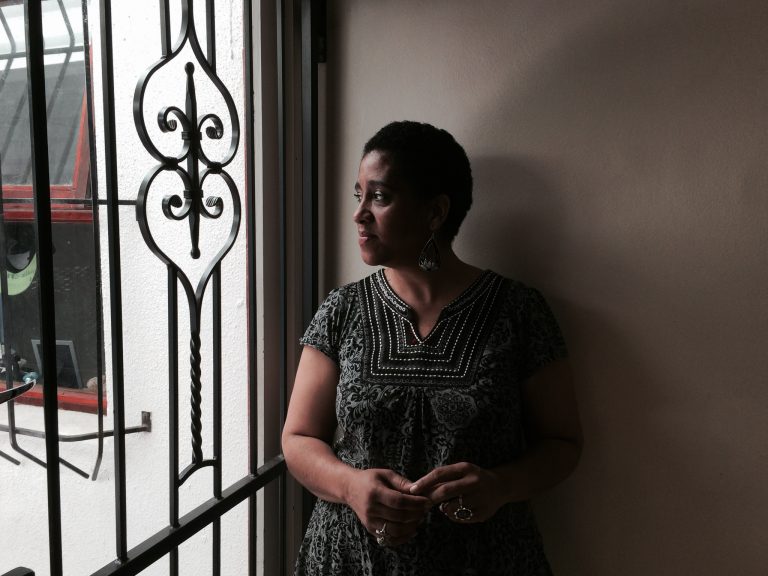By Malika Ndlovu, a writer-poet, arts project manager and a mother to three sons and a stillborn daughter.
Like an old river that separates one piece of earth from another, on arrival at its bank we are forced to contemplate the crossing…to face the fear of drowning, of being swallowed before reaching the stable ground on the other side. Or even further on to the less scary, desired place beyond – trauma, loss, but the necessary currents and tides of grief cannot be avoided. They must be effectively navigated and whether with the ideal of support or an accessible rock midway, the assurance of a bridge built by those who have crossed before, still there is an indescribable aloneness that such internal sinking brings. There is often paralyzing terror at the thought of allowing the river to take over even for a while, fear of the unknown of where it may eventually toss you ashore.
…water, the river, its relationship with the ocean…an inevitable and at times overwhelming mother to all rivers…seems to me the perfect way to relate to such emotional weight.
Nature, wild and substantially unpredictable, bears so many metaphors for sorrow and depression. This one, water, the river, its relationship with the ocean…an inevitable and at times overwhelming mother to all rivers…seems to me the perfect way to relate to such emotional weight. In my own times of intense grief, protracted sorrow or depression, I have expressed in writing, poetry or conversation this sense of not being able to breathe, the sensation of drowning in the open air, being “under the water” in invisible ways that perhaps only those who know such experiences can fully grasp.
The stillbirth of my only daughter Iman Bongiwe in January 2003 was one of those great rivers I have had to cross and will have a lifelong memory of, if not ongoing relationship with.[1] Though I am less and less imprisoned by grief over time, I cannot underestimate the ripple effect of other traumatic events in my life, my family, community or the bigger world around me. The stories and haunting images of others are carried in the same rivers from mountains and valleys all over the world.
The stillbirth of my only daughter Iman Bongiwe in January 2003 was one of those great rivers I have had to cross and will have a lifelong memory of, if not ongoing relationship with.
Sometimes quite unexpectedly, regardless of how many years later, an emotional or memory trigger, like a rock thrown into the water, reverberates and my tears or numbing or withdrawal from life lasts a few hours, days or even a while longer. Having felt the deep sinking feeling return a few times now, I can anticipate this will happen in ways I cannot foresee or control but I can learn how to water-dance. I now swim with them and give permission for these vibrations to work through me. This helps me develop my awareness of their onset, when or where to ask for support, when to retreat into solitude to give myself time and quiet to hear the water’s messages and music more clearly. Somehow there is medicine in this and I am beginning to trust it more and more. It reaches where words fail. It works – unfailingly.
Not all rivers are giant and life-threatening to cross but they offer similar challenges and thankfully reassuring wisdoms. The river stays the same, but its waters are ever-changing implies “this too shall pass” and each day, each moment is in fact new and presents new opportunities and perspectives for healing. “All rivers run to the sea,” for me, means eventual relief and inevitable surrender from struggle to contain, control or overcome the depression that persistently wants acknowledgment and release. It will not let us go until we do just that. Let its currents do their cleansing and renewal work simply by passing through – giving permission for the sorrows to be named and to flow. Fighting the currents only leads to further depletion and exhaustion. By “simply” I do not mean this is simple to do, but that it is a clear available strategy for addressing what cannot be circumvented, facing the shadows from which we cannot run or hide.
Let its currents do their cleansing and renewal work simply by passing through – giving permission for the sorrows to be named and to flow.
While clinical interventions in relation to depression have their purpose and context, there are numerous creative, therapeutic and highly economical resources we can access, to complement and enrich mental health and wellness medical approaches. One deeply inspiring example of this is the Friendship Benches project which has proven very successful in addressing treatment gaps, especially in low- and middle-income contexts like sub-Saharan Africa where mental disorders are hardly recognized and exacerbated by an under-resourced medical system. Another invaluable therapeutic tool kit and viable methodology developed within this context are body maps, particularly useful in cases of (compounded) bereavement such as through HIVAIDS losses and war ravaged places. Jane Solomon, developer of this work, describes body mapping as a tool for using art in a healing way, helping people to remember things and to find answers to problems but primarily to tell their stories. She maintains that body mapping works better in a group, “where everyone can support and inspire each other. It can become like a ritual or a ceremony.”[2]
As an applied artist often working with ritual and in my mothering I take great comfort and restoration in nature’s evidence of there being many forms of medicine for all kinds of wounds. I teach my children to stay alert for these and to appreciate autumn and winter’s lessons and gifts. How else can they come to know the profound joy of what follows, of being alive?
